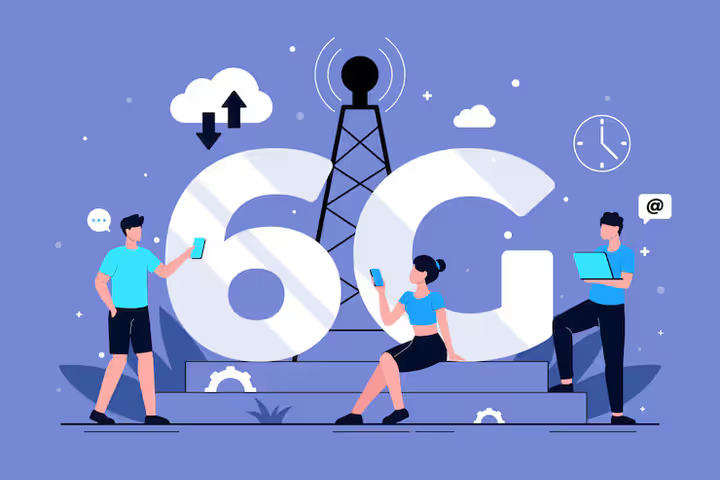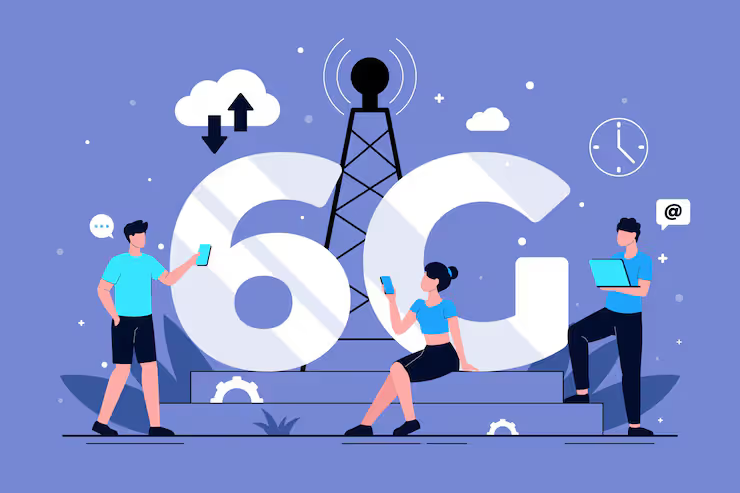
5G vs 6G Overview Explore Key Facts, Insights, and Future Connectivity Trends
The shift from 5G to 6G represents one of the most important transitions in the telecommunications ecosystem. 5G was created to deliver ultra-fast speeds, low latency, and advanced connectivity for smartphones, IoT systems, automation, and large-scale digital infrastructure. The concept of 6G emerged as the next-phase wireless architecture designed to solve the limitations of current networks and unlock new possibilities such as holographic communication, AI-driven networks, and extremely high-frequency spectrum usage.
The demand for higher bandwidth, edge intelligence, immersive experiences, and secure hyper-connected environments has accelerated research into next-generation wireless innovations. Global research institutions, telecom companies, device manufacturers, ministries of communication, and standards bodies are deeply involved in shaping 6G frameworks. As digital transformation continues across industries, the need for advanced mobile broadband, secure network frameworks, and sustainable connectivity solutions becomes more pressing.

Importance
5G and 6G technologies matter because they influence critical sectors such as healthcare, transportation, manufacturing, retail, smart cities, defense, and digital finance. They help solve challenges related to real-time communication, automation reliability, data density, and spectrum efficiency.
Why this matters today
-
These technologies support expanding digital ecosystems including autonomous mobility, cloud robotics, intelligent factories, and remote healthcare platforms.
-
Businesses and governments rely on high-performance connectivity for data-driven decisions, predictive analytics, and secure operations.
-
Consumers experience improved mobile performance, enhanced streaming quality, and seamless device integration through advanced wireless infrastructure.
Who benefits
-
Enterprises using connected automation and IoT networks
-
Researchers building AI-driven communication models
-
Telecom operators developing strong mobile broadband architectures
-
Citizens in urban or rural regions requiring stable digital connectivity
-
Governments planning smart city or digital public infrastructure initiatives
Problems addressed
-
Network congestion in dense environments
-
Latency limitations affecting mission-critical applications
-
Spectrum scarcity challenges
-
Security vulnerabilities in legacy networks
-
Inadequate support for ultra-high-definition communication and immersive technologies
Recent Updates
The past year has seen significant developments in 5G deployment and 6G research across multiple regions.
Key updates from 2024–2025
-
In June 2024, several global telecom alliances expanded 5G Standalone networks, enabling improved reliability and edge performance.
-
By late 2024, major research groups published early 6G test results focused on terahertz communication and AI-driven spectrum optimization.
-
In 2025, early-stage 6G pilot trials exploring ultra-low latency and integrated sensing capabilities began in select innovation labs.
-
Multiple international forums conducted policy discussions on harmonizing 6G spectrum planning, expected to influence standards development toward 2030.
These updates highlight a growing shift from traditional wireless deployment to intelligent, adaptive, software-defined network capabilities.
Laws or Policies
Telecommunication technologies operate under strict national and international regulations. Policies influence spectrum allocation, security guidelines, infrastructure deployment, and research initiatives.
Policy factors affecting 5G and 6G
-
National telecom authorities manage spectrum licensing, infrastructure permissions, and connectivity frameworks.
-
Security regulations require encrypted communication, trusted hardware components, and strict compliance for critical sectors.
-
Digital public infrastructure initiatives in many countries promote secure and scalable wireless networks to support economic growth.
-
Environmental and electromagnetic guidelines ensure safe installation of small cells, fiber infrastructure, and high-frequency equipment.
-
Standards bodies such as ITU, 3GPP, and IEEE shape global norms for radio interfaces, frequency bands, and network architecture.
These regulations ensure fair usage, public safety, and stable digital growth while preparing for future network demands.
Tools and Resources
A number of helpful tools, references, and platforms support research, analysis, and network performance tracking for 5G and 6G technologies.
Useful tools and resources
-
Network benchmarking apps
Tools that allow users and professionals to assess network latency, speed, and signal stability. -
Spectrum analysis software
Used by engineers to examine frequency performance, interference levels, and signal patterns. -
Telecom policy repositories
Government portals offering regulatory updates, wireless guidelines, and digital ecosystem plans. -
Technical whitepaper libraries
Research platforms that provide insights into mobile broadband evolution, advanced antennas, and AI-driven networks. -
IoT network planners
Software tools for evaluating device density, connection performance, and coverage mapping.
These resources help researchers, engineers, and organizations understand emerging trends, validate performance, and plan future connectivity strategies.
Comparison Table: 5G vs 6G Key Features
| Feature | 5G Technology | 6G Technology (Projected) |
|---|---|---|
| Peak Speed | Up to 10 Gbps | Expected 1 Tbps level |
| Latency | As low as 1 ms | Near-instant (sub-millisecond) |
| Spectrum | Sub-6 GHz & mmWave | Terahertz & advanced spectral bands |
| Intelligence | Network optimization | AI-native, self-learning systems |
| Applications | IoT, AR/VR, automation | Holographic communication, digital twins, immersive AI |
| Deployment Timeline | Ongoing global rollout | Around 2030+ availability |
FAQs
What is the difference between 5G and 6G?
5G focuses on high-speed mobile broadband, low latency, and improved network efficiency, while 6G aims to deliver terahertz communication, intelligent connectivity, near-instant response times, and advanced immersive experiences. 6G is still in early development and is expected to mature around 2030.
Is 6G replacing 5G soon?
No. 5G deployment will continue through the decade. 6G research is ongoing, and widespread implementation is projected for after 2030. Both technologies will coexist during the transition period.
How does 6G improve real-time communication?
6G is expected to use advanced spectrum bands, AI-driven optimization, and integrated sensing technologies to achieve extremely low latency, enabling high-precision communication for robotics, autonomous systems, and interactive digital environments.
What industries benefit the most from 5G and 6G?
Industries such as healthcare, manufacturing, transportation, education, and digital finance benefit through automation, real-time analytics, remote control applications, and secure connectivity environments.
Will 6G support AI-driven networks?
Yes. 6G is projected to integrate AI at the core of its architecture, supporting automated decision-making, dynamic resource allocation, and intelligent security frameworks.
Conclusion
The evolution from 5G to 6G marks a significant shift toward hyper-connected, intelligent, and immersive digital ecosystems. As 5G continues to expand globally, it strengthens industries and empowers innovative applications across IoT, automation, and digital infrastructure. At the same time, early-stage 6G research is shaping the future of connectivity through terahertz communication, integrated sensing, AI-native networks, and next-level mobility experiences.
Both technologies play important roles in enabling secure, high-performance wireless environments for governments, enterprises, and individuals. As policies evolve and technological research accelerates, 6G will eventually build upon the foundation laid by 5G, delivering transformative capabilities that redefine digital interaction and global communication.










